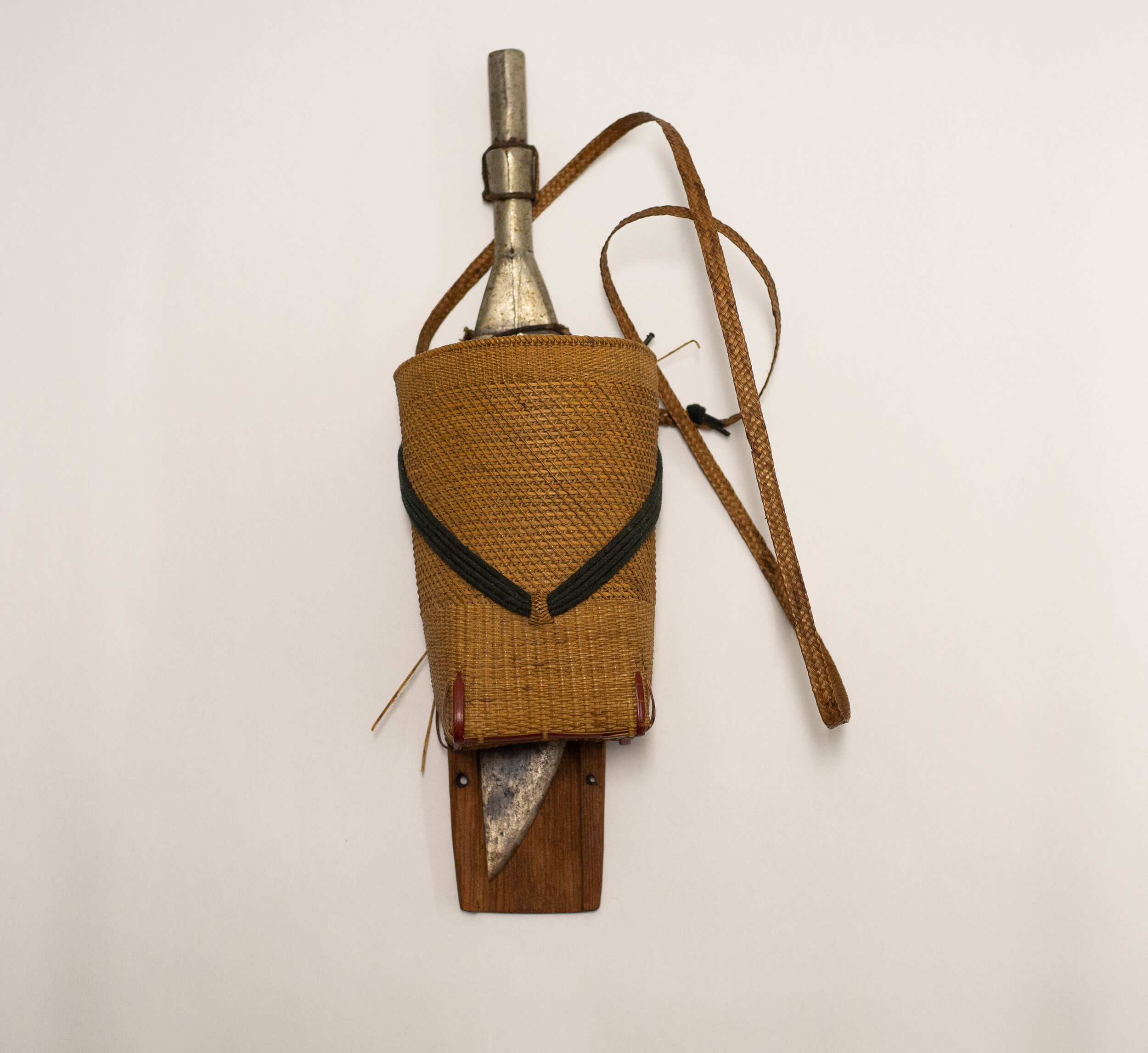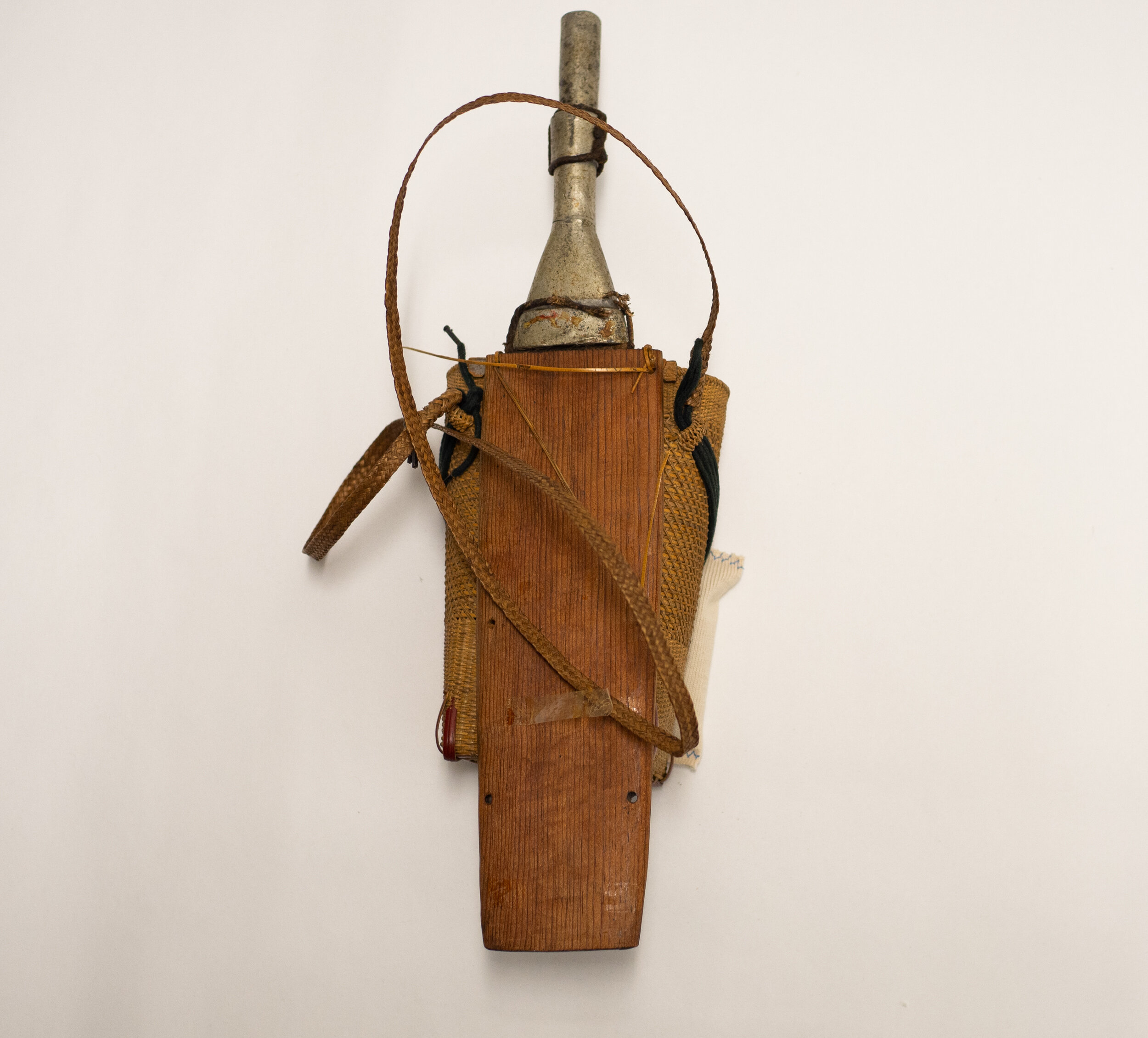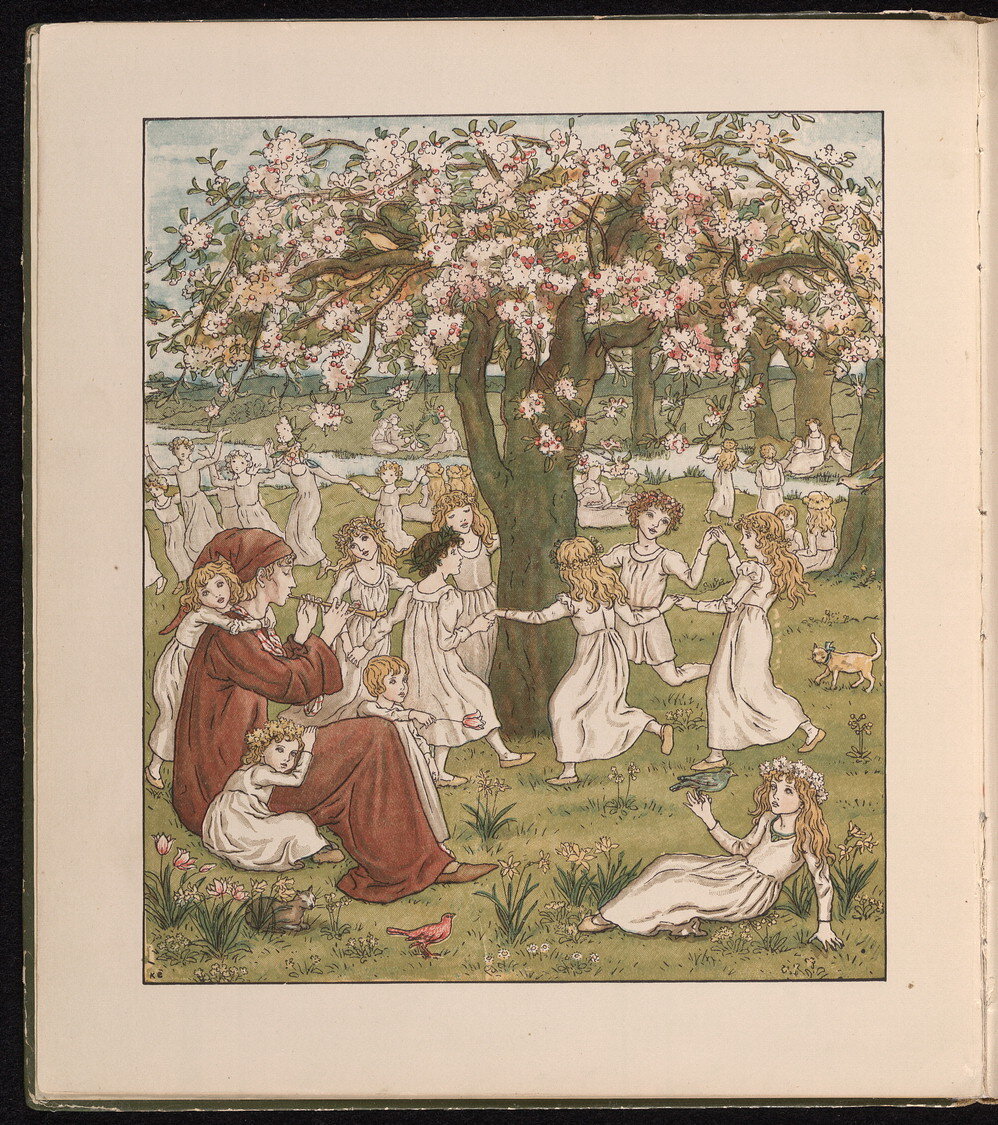Believe it or not, it’s National Rat Catcher’s Day! This “holiday” was originally established to commemorate the story of the Pied Piper of Hamelin. The legend, popularized by the Brothers Grimm and Robert Browning, tells the tale of Hamelin, a small German village overrun with rats. The village hires a piper to get rid of the rats, which he does by playing his flute. When the village refuses to pay him for this service, he exacts revenge by luring all of the children away with his music and drowns them, just like the rats. However, this modern holiday serves as a celebration and way to thank all present-day exterminators.
The Pied Piper of Hamelin. Courtesy of the Library of Congress.
Recently found in NUMU’s collection is something that can, quite literally, be classified as a rat-catcher. According to our records, this woven basket and accompanying knife with wooden sheath is a rat knife, and was used by the Chin people in Burma (present-day Myanmar) to hunt and catch rats. Rats and other rodents were used as an important protein supplement in the Burmese diet, and a rat hunter would be able to use a basket such as this to store multiple animals at once. Hunting prowess played an important role in the Chin belief system; skilled hunters were believed to have a high rank in the afterlife.
The Chin people live predominantly in the Chin State of Myanmar, but also reside in parts of Bangladesh and India. When the British established colonial rule in Burma, they governed the Chin separately, allowing them to retain their traditional chiefs and culture. After Burma gained independence in 1948, the Chin established their own democratic government, which ended with a 1962 military coup d'etat. Today, the Chin are one of the most heavily-persecuted ethnic minorities in Myanmar due, in part, to their religious practices. In the 1800s the Chin were largely converted to Christianity by Baptist missionaries, while the remaining majority of Burma practices Buddhism.
-Alexandra Schindler, Collections Registrar
A Chin man and woman in traditional dress, circa 1905. Courtesy of the Museum of Natural and Cultural History, University of Oregon.
A contemporary Chin woman, with traditional face tattoos. Courtesy of Atlas of Humanity.







